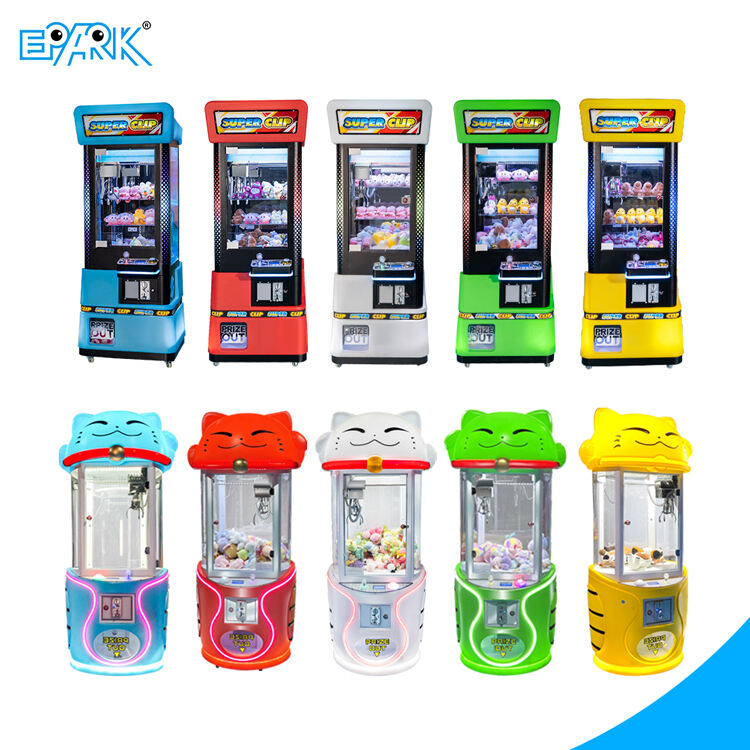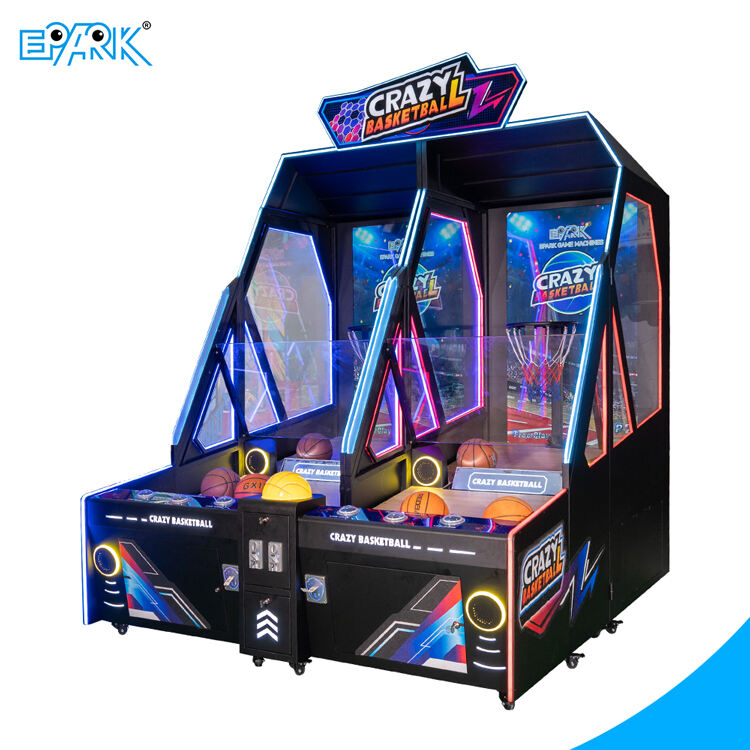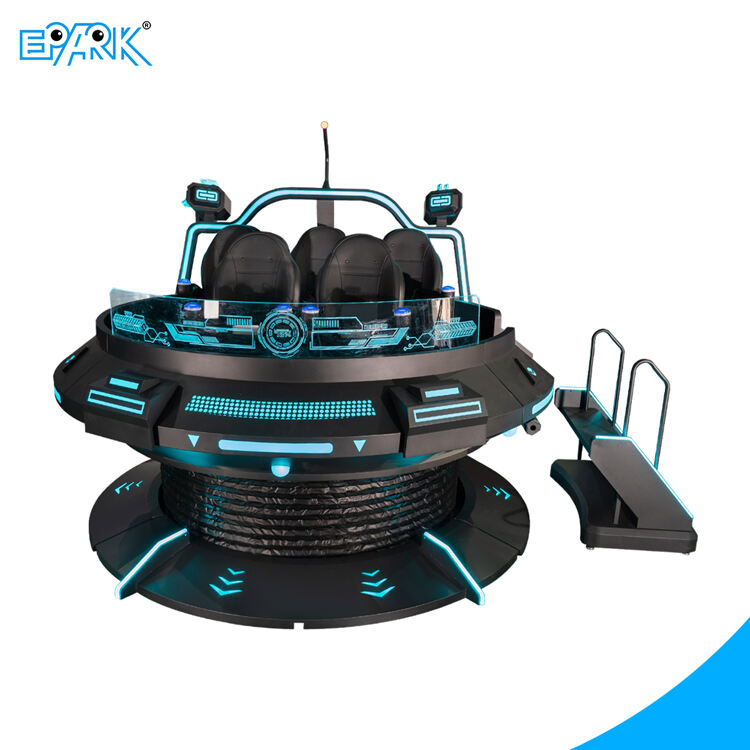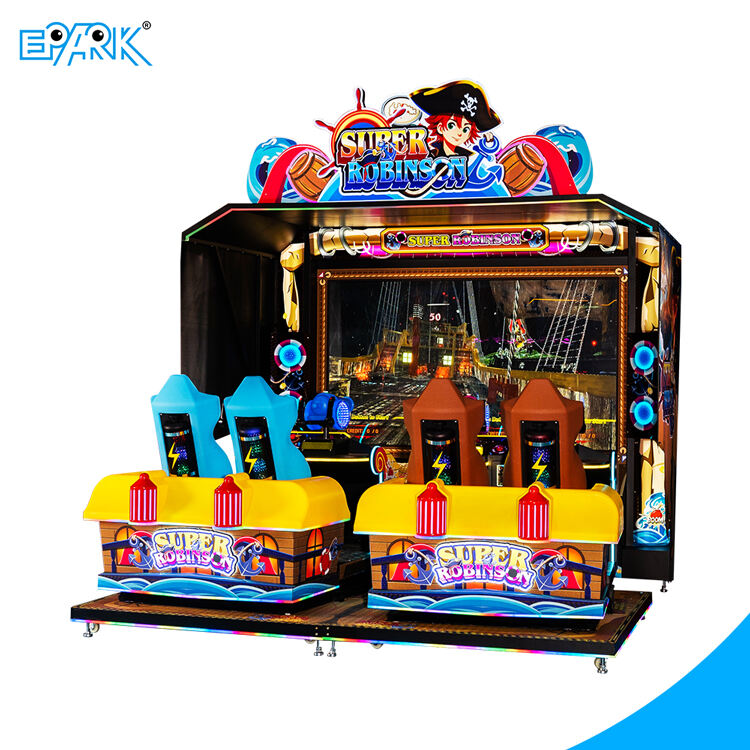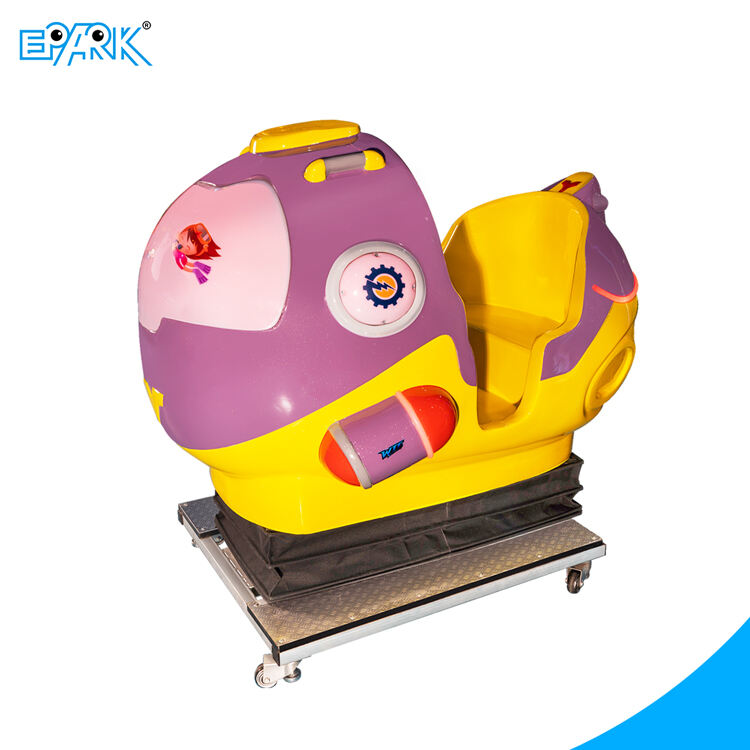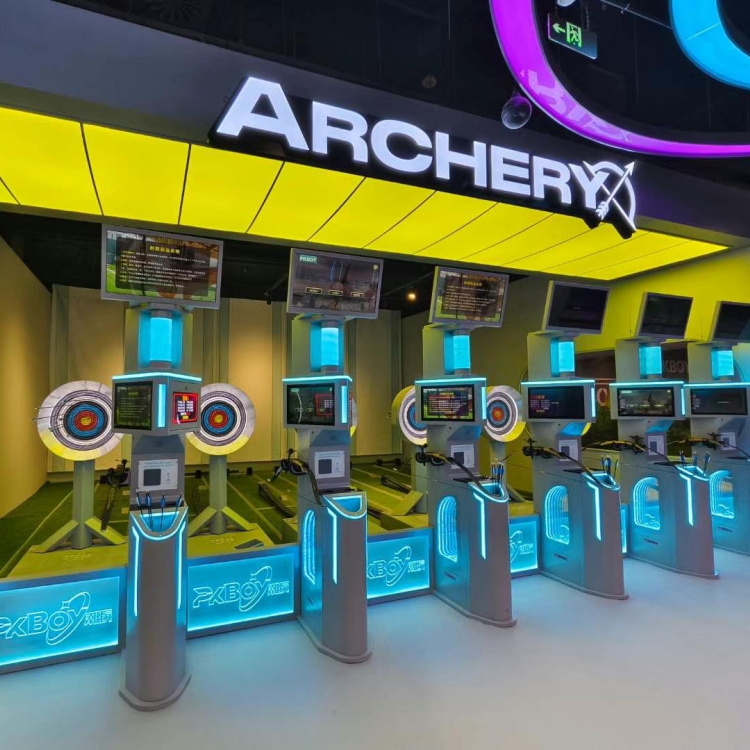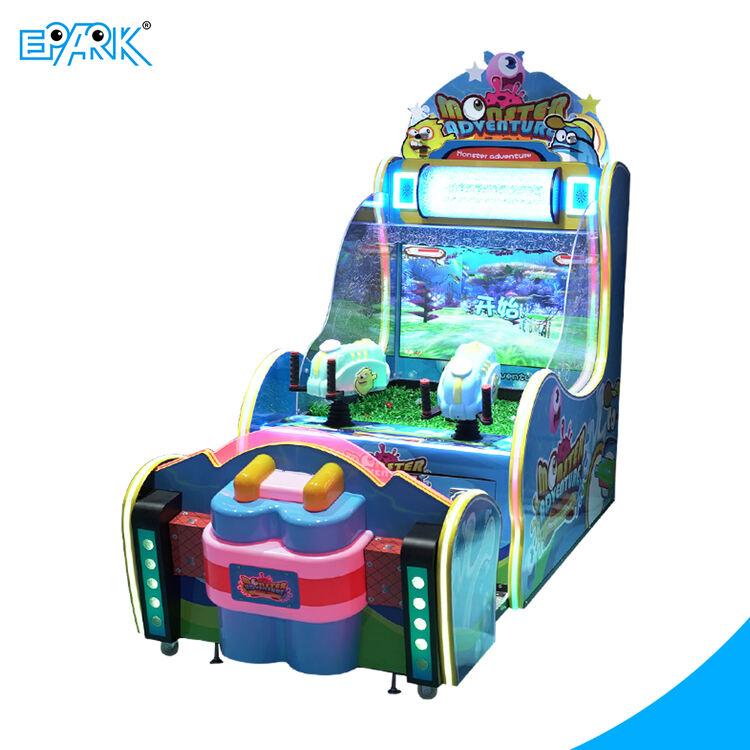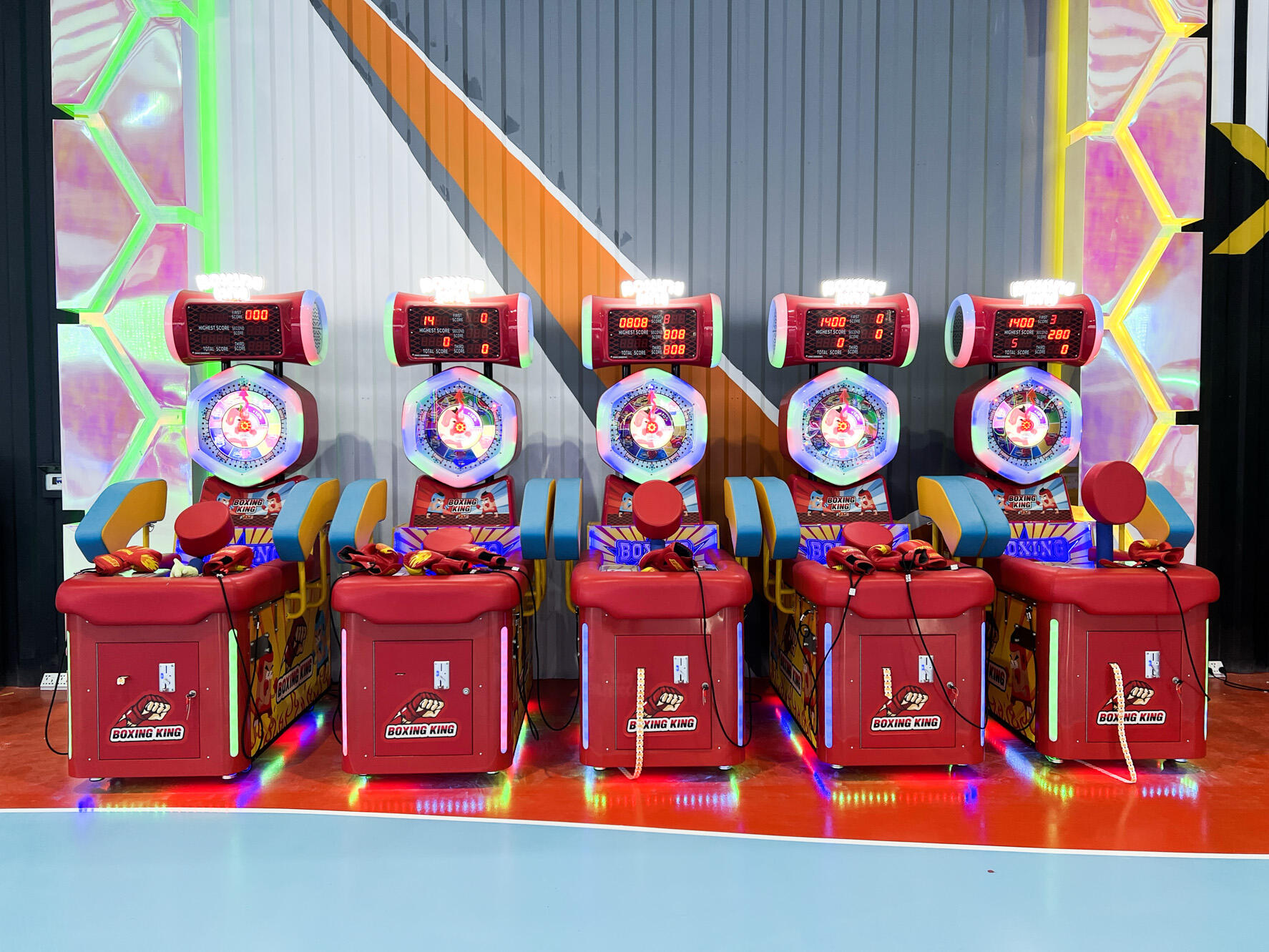Arcade Maşınlarının Cari Müştəri Mütəxəssisi Stratejiyasında Rolu
Xatirəni Modern Oyun Trendləri ilə Birləşdirin
Təbii ki, arakad kabinetləri müştərilərin geri qayıtmasını təmin etməkdə hələ də böyük rol oynayır, çünki onlar keçmişin əyləncəsini bu gün oyun oynamaq istəyənlərin ehtiyacları ilə birləşdirir. Klassik arakad təşkilatları Pac-Man oynamaq üçün qəbizlər atmaq və Space Invaders-dakı pikselləşmiş hücumlardan yayınmaq üçün xatirələrini yaddaşlarında canlandıran insanları cəlb edir. Eyni zamanda yeni arakadlar daha yaxşı qrafika və mexanikalarla cazibəli hala gəlir və bu, gənc auditoriyanı cəlb edir. Məsələn, Street Fighter hal-hazırda eyni personajları görürsən, lakin daha şık qrafika və əvvəllər mövcud olmayan onlayn döyüş rejimləri ilə. Həqiqi sirr isə insanlar uşaqlıqda oynadıqları oyunlarla emosional əlaqə qurduqda baş verir. Biznes sahibləri də bu yaxşı bilirlər, çünki uşaqlıq xatirələrinə müraciət etmək, illərdir geri qayıdan sadiq müştərilər yaradır.
Çoxtərəfli Təcrübələrlə Sosial Mərkəzlər Yaratmaq
Bu gün maşınlarla oynanılan oyunlar çox nəfərlik oyunlar vasitəsilə insanların birgə toplaşmasına kömək edir və insanların yenidən-yenidən gəldiyi ictimaiyyətlər yaradır. Məsələn, Mario Kart – kəşanın bu oyunu təklif etməyə başlaması ilə oyunçular arasında ciddi sosial əlaqələrin yaranmasına səbəb oldu. İnsanlar dostları ilə birlikdə yarışarkən onlarla birgə vaxt keçirməyi sevirlər və bu, onların hər həftə eyni yerdə olmaq istəyinə səbəb olur. Son oyun sənayesi məlumatlarına görə, çox nəfərlik oyun stansiyaları quran yerlərdə ziyarətçilərin sayı artır. Ziyarətçilər hər şənbə axşamı birlikdə oynamaq üçün müntəzəm qruplar yaratmağa başlayırlar. Kəşanın sahibləri bu sistemin işə yaradığını bilirlər, çünki onlar müştərilərin bu paylaşılan oyun anlarından yaranan dostluqlar nəticəsində təkrar satışlar görür.
Əldə edilən mükafat sistemləri ilə təkrarlı iş razılığına ödüncülük etmək
Arcade oyunlarının mükafatlandırma sistemləri insanların dəfələrlə yenidən qapını keçməsinə kömək edir. Bütün məqsəd odur ki, insanlar yenidən gəlsinlər, çünki onlar həmin biletləri və ya xalları istəyirlər ki, bu da gələcəkdə hər kəs üçün bir şeylərə çevriləcək. Bu cür mükafatlandırma sistemlərini təklif edən yerlər həmçinin öz müntəzəm ziyarətçilərinin daha uzun müddət qalma ehtimalını müşahidə edirlər. İnsanlar qazana biləcəkləri müxtəlif şeylər var - yumşaq heyvanlar, kiçik cihazlar, bəzən hətta tədbirlərə gedən xüsusi keçidlər və ya yerli hadisələrdə VIP status kimi xidmətlər də olur. Bu cür çeşidlilik isə yaş qrupundan asılı olmayaraq hər kəs üçün bir şeyin olmasını təmin edir. Oyun zalları oyun oynadıqdan sonra real mükafatlar verdiyi zaman müəyyən bir dövrə yaranır ki, bu da müştərilərin yenidən gəlib mükafat toplamasına və nəticədə uzun müddətli sadiqliyin formalaşmasına səbəb olur.
Təkrarlı ziyarətləri təşviq etməkdə arcade oyunlarının psixoloji təsiri
Meharət əsaslı çətinliklərin dopamin effekti
Bacarıqlara əsaslanan arakad mühit oyunları beynimizdə mükafatlandırma sisteminə təsir edərək öz sihri təsirini göstərir və buna görə də insanlar bu oyunları oynamağı dayandıra bilmirlər. Kimi oyunlardan birini oynayan şəxsin beyni dopamin ifraz etməyə başlayır. Bu kimyəvi maddə bizə xoş hiss verir və eyni şeyi təkrar-təkrar etmək istəyini yaradır. Neyroelmi tədqiqatlar göstərir ki, bu cür "xoş hiss" verən kimyəvi maddə həqiqətən də insanların müəyyən davranışlarını təkrar etməsinə kömək edir. Məsələn, pinball maşınları və ya arakadlardakı çətinlik təşkil edən tapmaca oyunları hər hansı bir şey uğurla yerinə yetirildiyi zaman dərhal rəftar vermək üçün xüsusi olaraq hazırlanıblar. Oyunçular xallar qazanır, səslər eşidirlər, hətta işıqların yandığını görə bilərlər və hamısı onları bir daha cəhd etməyə, sonra yenidən cəhd etməyə və həmişə növbəti yüksək xala çatmağa sövq edir.
Box və spor simulatorlarında rəqabətli heyvanat
Yarışmaları özündə birləşdirən və ya qutu simulyasiyaları və ya idman janrlarını əhatə edən arakad mühitində oynanan oyunlar həqiqətən də hissləri gücləndirir və insanların yenidən və yenidən gəlməsinə səbəb olur. İnsanlar belə oyunlara daxil olduqda, başqalarına qalib gəlmək və ya bir şeydə daha yaxşı olmaq arzusu onlarda həyəcan hissi yaradır. Bir çox arakad klublarında Street Fighter və ya NBA Jam kimi oyunlar insanlarda qalib gəlmək həqiqətən də əla hissi yaradan, gərgin anlar yaradır və buna görə də həmin yerlərə tez-tez gələn ziyarətçilər olur. İnsanlar yüksək hesabları üstələməkdən və ya rəqibləri aldatmaqdan zövq alırlar. Oyun dizaynerləri bu mexanizmin psixoloji cəhətdən necə işlədiyini də bilirlər – yarışmaq insanın təbiətinə minadən gələn meydan oxumaqlarını və nailiyyətlərini dostlarına nümayiş etmək arzusunu oyatır. Buna görə də bir çox insan illərdir bu cür maşınların və oyunların həvəskarı olaraq qalır.
Qiymət və hadisə oyunlarında mükafat gözləntisi
Bilet və mükafat oyunları insanları növbəti dəfə hansısa qazana biləcəkləri ilə bağlı həyəcanlanır və təbiətən cəlb edici olur. Belə həyəcan insanları yenidən və yenidən qayıtmağa sövq edir. Bu oyunların çoxu o qədərlik gözləməyə nail olur ki, oyunçular daha çox bilet qazanmağa və mükafat toplamağa alışır. Statistikaya baxanda maraqlı bir şey də ondan ibarətdir ki, çoxlu insanlar biletlərini pul çevirirlər və bu da onların daha çox qayıtma ehtimalını artırır. Arkadlarda yerləşən və ya satılan qolovoy maşınları, hava hokeyi kimi oyunlar isə müxtəlif müştəri qruplarını cəlb edir, çünki hər kəs tez bir şəkildə onları öyrənərək meydan oxumağa həvəsli olur. İnsanlar səy və vaxtlarının sonunda real bir şey əldə edəcəklərini bildikdə, kiçik oyuncaqdan tutmuş gözlənilməz təcrübəyə qədər, bu onları oyunda saxlayan ən vacib amildir. Vaxtlarını sərf etmələrinin nəticədə konkret bir şey verməsi isə bizneslərin təkrar müştərilər görməsinə və uzun müddətli brend loyallığına nail olmasına kömək edir.
Yüksek Saxtaşma Arcade Maşınlarının Əsas Xüsusiyyətləri
Geniş Müraciət Üçün Adaptiv Zorluq Ayarları
Təcrübəli oyunçuların və ya yeni başlayanların diqqətini uzun müddət saxlamaq üçün arakad oyunlarının çətinlik səviyyəsini necə tənzimləməsi böyük rol oynayır. Oyun oynayan şəxsin nə qədər bacarıqlı olmasından asılı olaraq çətinlik səviyyəsi artıq və ya azalırsa, həm yeniyetmələr, həm də təcrübəli oyunçular üçün daha əyləncəli bir təcrübə yaranır. Frontiers in Psychology jurnalında dərc olunan araşdırma göstərir ki, bu cür tənzimlənən çətinliklərlə daha yaxşı daxilolma arasında əlaqə mövcuddur. Məsələn, Guitar Hero oyunu götürək - çoxsaylı oyunçular oyunun çətinliyinin nə qədər yüksəldiyini, lakin çox da çətinləşmədiyini xoşlamışdılar. Tetris oyununun bəzi versiyaları da oxşar üsullardan istifadə edirdi, burada bloklar o qədər tez düşürdü ki, oyunçu bacarıqlarını artırmağa davam edirdi. Nəticədə aydın görünür ki, fərdi performansa uyğunlaşan oyunlar insanları daha uzun müddət maraqlı saxlayır və onları yeni təcrübələr üçün yenidən qayıdacaqlar.
Optimal Maşın Performansı üçün İdarəetmə Stratejiyaları
Avtomatlar üçün qövslərin düzgün işləməsi üçün müntəzəm təmir və texniki xidmət göstərmək onların işləmə keyfiyyətinə və müştərilərin onlara münasibətinə ciddi təsir göstərir. Yaxşı qayğıya səbəb olan avtomatlar ümumiyyətlə daha yaxşı işləyir və sadəcə daha uzun ömürlü olur ki, bu da operatorların vaxt keçdikcə pullarına daha çox qiymət qazandığı anlamına gəlir. Sənaye rəqəmləri maraqlı bir şeyi də göstərir: düzgün şəkildə təmir edilən maşınlar tez-tez nəzərdən qaçırılanlardan iki dəfə uzun müddət saxlanılır. Gündəlik texniki xidmət üçün əksər operatorlar həftədə bir mexaniki problemə yoxlamaq, hər ay əsaslı təmizlik etmək və proqram təminatını lazımi olduqda yeniləmək faydalı hesab edirlər. Bütün bu qabaqcıl tədbirlər isə əsas saatlarda daha az arızaya səbəb olur. Bu cür fərqləri qeyd edən arakəndlər oyunların gözlənilməz arızalar və gecikmələr olmadan etibarlı şəkildə işlədiyi zaman təkrar-təkrar qayıdırlar.
Məşhur Fransızlıqlar və Brandli Məzmunların Daxil Edilməsi
Populyar franşizalara və brend məzmununa malik olan arakad qeydləri insanların marağını cəlb edir və müxtəlif təbəqələrdən insanları cəlb edir. Arakadlar sevimli seriyalardan böyük fan bazasına müraciət etdikdə, oyunçular təbii olaraq tanış bir şey axtarır. Məsələn, Star Wars və Marvel mövzusuna həsr olunmuş maşınlar operatorlar üçün mənfəət gətirən mənbələrdir, çünki seyirci sevimli qəhrəmanların həyatını sevir. Son sorğular da maraqlı bir dəyişikliyə işarə edir - istehlakçılar sevimli brendlərlə əlaqəli oyunlara əlavə pul xərcləməyə hazırdırlar. Ağıllı arakad sahibləri bu cür strategiyanın işə yaradığını bilirlər. Onlar həm daimi ziyarətçiləri yenidən gətirmək, həm də əks halda içəri addım atmayacaq yeni gələnləri cəlb etmək üçün təcrübələr yaradırlar.
Gamifikasiyası Arcade Təcrübələri vasitəsiylə Tətbiq
Oyuncu Profilləri Vasitəsilə Proqressin İzləməsi
Oyun yaradıcıları oyunçu profilləri yaratdıqda, əslində insanları yenidən və yenidən geri gətirən xüsusi bir şey əlavə edirlər. Profillər insanların mövqelərini izləməsinə, indiyə qədər qazandıqları fəxrlərə baxmasına və hətta özü üçün yeni meydan oxumaları planlaşdırmasına imkan verir. Bu bütöv sistem əsasən oyunlaşdırmanın nədən ibarət olduğunu göstərir. Bununla bağlı texnologiyalar da olduqca inkişaf etmişdir. Məsələn, bizim karnavalarda sürüşdürdüyümüz RFID kartlar və ya bulud saxlama həlləri ilə əvvəlki yerimizdən davam etmək olduqca asandır. Əksər oyunçular bunu sevir. Bir çox tədqiqatlar göstərmişdir ki, oyunlar bizim kim olduğumuzu və üstünlüklərimizi xatırladıqda, ümumiyyətlə daha yaxşı hiss edirik. İnsanlar daha uzun müddət qalır, çünki onlar öz inkişaflarına bağlı hiss edir və şirkətlər də digər oyunlara tez keçməyən daha razı müştərilərə malik olurlar.
Müəyyən vaxt üçün hadisələr və mevsimli məzmun yeniləmələri
Oyunlar müddətli tədbirlər və mövsümi kontent yeniləmələri təqdim etdikdə, oyunçuların marağını saxlamaq üçün olduqca güclü bir şeyə əl atırlar. Bu cür təbliğatlar işləyir, çünki insanlar başqalarının əlindən buraxa biləcəyi şeyləri istəyirlər, xüsusilə də mükafatlar olduqca gözəl olduqda. Bir çox oyun şirkəti illik ən böyük tədbirlərini böyük bayramlar və ya digər əhəmiyyətli tarixlərə təsadüf edən dövrlərdə planlaşdırırlar. Belə yanaşma həm yeni oyunçuları, həm də keçmişdə bu cür tədbirlərdə əyləndiklərini xatırlayan köhnə oyunçuları cəlb edir. Məsələn, Həllovin və Qış şəxsiyyətli tədbirləri götürək. Arakəndlər belə hallarda ziyarətçilərin sayında və xərcləmələrdə fərqli artım müşahidə edirlər. Rəqəmlər də müştərilər arasında həyəcan yaratmaq və onları yenidən yenidən mağazaya döndərmək üçün bu üsulların nə qədər effektiv olduğunu təsdiqləyir.
Digər Biznes Təklifləri Ilə Ünsiyyətli Reklam
Kino teatrı digər yerli bizneslərlə oyunlarını əlaqələndirdikdə, faktiki olaraq daha çox insanın diqqətini cəlb edir və yerlərini xatırlamağı təmin edir. Kino teatrı sahibləri müxtəlif şirkətlərlə əməkdaşlıq edərək mövcud təkliflərini genişləndirə bilərlər və bu, müxtəlif yeni müştəriləri cəlb edir. Belə müqavilələrdən əldə olunan həqiqi nəticələri müşahidə etmişik. Məsələn, bəzi yerlər yaxın restoranlarla əməkdaşlıq edərək orada yemək yeyənlərə oyunlar üçün endirim kuponları verirlər. Başqaları isə alıcılara əyləncəli keçirmək imkanı yaratmaq üçün mağazaların daxilində mini kino teatrları qururlar. Həmçinin rəqəmlər də yalğış demir – bu təbliğatlar zamanı satışlar həqiqətən artıra bilir. Buna görə də, çoxsaylı biznes sahibləri artıq kross-təbliği yalnız əlavə bir şey kimi deyil, həm də müştəri bazasını artırmaq və daimi alıcılara maraqlı tədbirlər təşkil etmək üçün nəzərdə tutulmuşdur.
Oyunçu Sessiya Tezliyi Metrikasını Analiz Edilməsi
Oyunçuların arakadlara nə qədər tez-tez gəldiyini bilmək onların vərdişləri və ya arakadda qalmaq istəyinə dair qiymətli məlumatlar verir. Arakad sahibləri insanların maşınları oynamaq üçün geri qayıtdığı zamanları izlədikdə həftədən-həftəyə kimin geri qayıtdığını və müştəriləri nəyin razı saxladığını görməyə başlayırlar. Hər dəfə oyun oynama müddəti, ziyarətlər arasındakı vaxt fasiləsi və ümumiyyətlə bir şəxsin neçə dəfə oynadığı kimi amillərə baxmaq daha aydın bir təsvir yaratmağa kömək edir. Hospitalit idarəetmə jurnalında dərc olunan tədqiqatlar göstərir ki, müntəzəm olaraq oynayanlarla bir neçə il ərzində sadiq müştəri qalanlar arasında əlaqə mövcuddur. Bu rəqəmləri diqqətlə izləyən arakad operatorları daha sonra promosiyalarını və xüsusi tədbirlərini həm daimi ziyarətçilərlə daha yaxşı əlaqə yaratmaq, həm də yeni müştəriləri cəlb etmək üçün tənzimləyə bilər və nəticədə əsas auditoriyası ilə daha möhkəm əlaqələr qura bilər.
Arcade Maşın İnvestisiyası üzrə ROI Hesablanması
Avtomat maşınların qaytarılma dəyərinin hesablanması biznes uğuru üçün çox vacibdir. Mağaza sahibləri avtomat investisiyalarından pul qazandıqlarını yoxsa yalnız pul itkisi yaşadıqlarını müəyyən etməlidirlər. Maliyyəni qiymətləndirərkən əvvəlcə bütün xərcləri nəzərə almaq məqbuldur: maşınların alınması zamanı ödənilən qiymət və davamlı texniki xidmət xərcləri. Gəlir tərəfindən isə oyunları oynayan insanlardan daxil olan gəlirlər, lokasiyada keçirilən xüsusi tədbirlər və təbliğat kampaniyaları da daxil olmaqla müxtəlif mənbələr mövcuddur. Son dərc olunan tədqiqatlara əsasən, köhnə klassik maşınlarla yeni modelləri diqqətlə seçən mağazaların investisiyadan yaxşı qaytarılma əldə etdiyi müşahidə edilmişdir. Bütün bu rəqəmləri nəzərə alaraq, avtomat operatorları növbəti hansı maşınların alınacağına daha ağıllı qərar verə və səmərəsiz seçimlərə vəsait sərf etməkdən çəkinə bilərlər.
Sənaye Saxtaqi Standartlarına Qarşı Nümayiş
Təsərrüfat normlarına nə dərəcədə uyğun gəldiyinə baxmaq müştəriləri saxlamaq baxımından onun rəqabət qabiliyyətini saxlamağa kömək edir. Əsas göstəricilərə hər həftə qayıdan müntəzəm ziyarətçilərin sayı və hər bir ziyarət zamanı gəlir kimi şeylər daxildir. Əksər biznes nəşrləri sektorda olan digərləri ilə müqayisədə bu göstəriciləri uyğunlaşdırmağın iş yerinin idarə edilməsi üçün daha yaxşı planlar hazırlamağa kömək etdiyini qeyd edirlər. Əyləncə mərkəzləri ilə bağlı dərin biliklərə malik olanlar həmişə bu müqayisə göstəricilərini yoxlamağın cari vəziyyəti görmək və təkmilləşdirilməli olan sahələri müəyyən etmək üçün danışırlar. Saxlama ölçüləri ilə davam etmək sahiblərə zamanla biznesini inkişaf etdirməyə, müasir əyləncə mərkəzlərindən gözlənilənlərə uyğun gəlməyə imkan verir.

